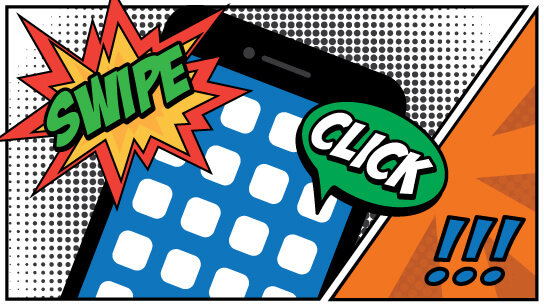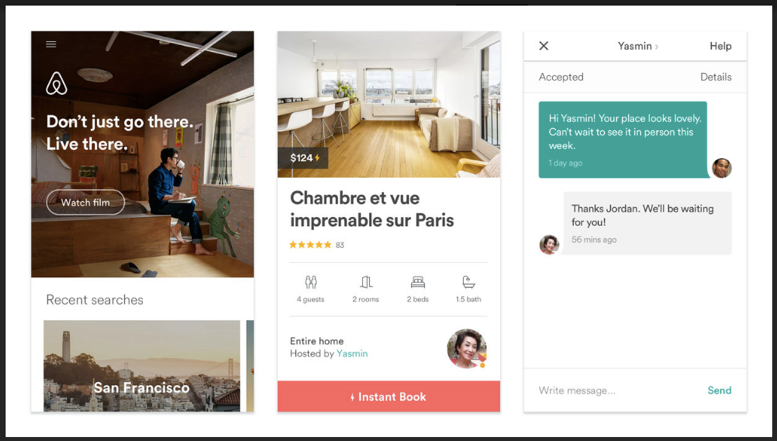Poke. Push. Tap.Tap.Tap. Pinch.
This is what your phone deals with every time you interact with it. The heaviest smartphone users touch their phone 5,427 times a day, according to researcher Dscout (2016). That may seem excessive, but the average user still clicks, taps and swipes 2,617 times a day. Talk about attachment issues!
Throughout the drops and spills every day, if our personal devices had a choice they would probably not want to get so personal with us. We don’t treat them very well; since they are just technology, we don’t think to treat them with humanity. A caress, a warm hug, or a reassuring pat when load speeds have it feeling down.
Digital interfaces are full of motion. When brands capture that motion as more than just decoration, something really special happens: true brand love. The material design of digital information is an orientation that usually gets skipped over due to the pace of business. The haptic feedback (buzz) your thumb recognizes as a back function, or the difference between an alarm vibrate and a notification vibrate, creates a magical choreography between technology and human activity. This is what truly gives life to a brand’s personality.

Our personal devices are baked with bleeding edge native technologies (especially Android…just kidding…kind of). By leveraging the gyroscope, accelerometer and pressure sensor, we can deliver gesture-based functionality to really make our strategy sing. And as with every marketing effort, a well thought-out strategy at the forefront is the anchor to success.
When working through your strategy and ideating concepts, consider how you can use technology to create an experience for the user. Imagine shaking your tablet to create a ‘scratch off’ experience to reveal a sweepstakes prize. Or twisting your wrist, to create the illusion of ‘opening the door’ to introduce a new product.
Users have spoken and experiential marketing (including VR and AR) is showing signs of longevity (read more: Let’s Get Real: VR is Here to Stay). Last year, Google introduced the Material Design Awards to distinguish brands that are experts in employing Material Design to create compelling emotion with an interface. AirBnB embraced the notion that humans innately want speed in all their rewards systems. With personalized messaging, precise design and sophisticated logic, the application delivers a universe of complex systems in a light and comfortable way.
Creating human interaction with the interface is a truly powerful medium to activate a brand’s connection to a current or prospective customer. Companies spend countless dollars to understand how to reach their customer at the right time and place, and now we can literally hold hands with affinity through a screen. In an environment where companies are vying for attention beyond just eyeballs, experience and meaningful human connections matter.






